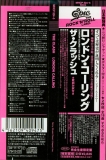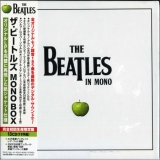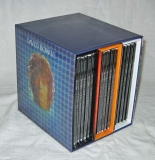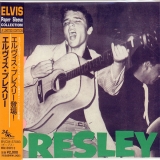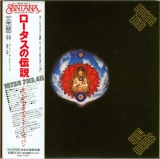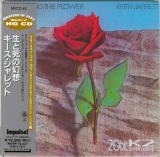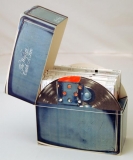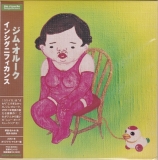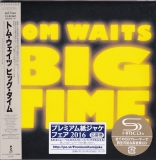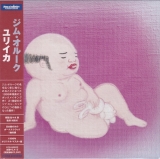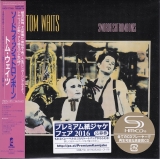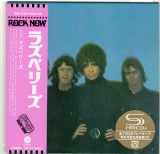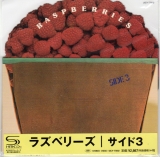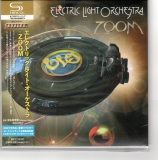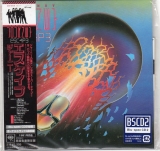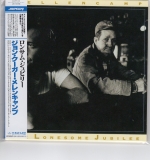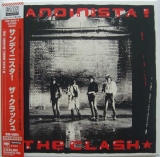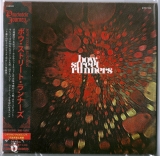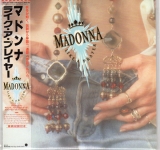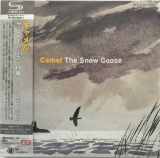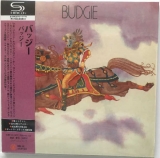|
Obi has a couple of meanings.
On this site it IS NOT an article of Japanese clothing (a sash or belt for securing and decorating a kimono).
On this site it is the small piece of paper included with a CD or LP usually wrapped around the left hand spine of the item. (See also promo obi.)
An obi strip is, for all intents and purposes, a disposable item. It provides information to the seller and to the buyer (mostly in Japanese) about the item being sold. Once the item has been sold to the consumer it is basically useless (it has served its purpose).
Although not strictly ephemera (disposable paper items such as postage stamps and cigarette and bubble gum cards), obis are collectable items in their own right.
To non-Japanese reading buyers, the dates on the obi provide an indication of when the item was made or became available.
What are all those dates?

Referring to the image above: there are two dates on the left hand side (the ones in the box) and a capital Y in a circle beside them. On the left there are two prices and one date.
Mini LP release date, Original LP release date and the "Yogaku" symbol
The top one of these dates is the mini LP release date.
The bottom date (in parentheses) is the date the album was originally released in Japan. In this case, the date is the release of the vinyl LP - not the replica CD.
Yogaku and the Japanese Rental Market
To the right of the box there is a capital Y inside a circle. This means "Yogaku" and signifies that the rights for this release exist with a non-Japanese company. As an aside, the term "Yogaku" generally means Western Music whereas "Hogaku" means Japanese music (although strictly speaking "Hogaku" refers to traditional music of the pre-Meiji period of 19th-century).
The relevance of this is that Western Music is not allowed to be rented to the Japanese public for one year after this date (Hogaku music may be rented 3 weeks after this date). In Japan, there is a large CD rental industry so a lot of people will rent CDs and albums rather than purchase them. It's not entirely clear why this one year limit for Western Music exists but it may have been instigated (from foreign pressure?) in the hope that more fans will buy the CD rather than rent.
Price, Taxes and Open Market Date
Moving to the right hand side of the obi there are two prices and one date.
The top price is with tax. The bottom price is without tax. Even though there is always a flat 5% tax it is a legal requirement to show both prices.
The date shown here is (05.5.16) is the date until which a seller must sell at the price listed on the obi.
After this date it can be sold at any price (higher or lower).
And just to confuse the issue...
Ben from Tokyo Music has the following to add: "Different record companies have different systems, and these change over time too. Just to confuse things, up until 1993 many record companies used LETTERS to represent years on the release date codes. Nothing logical though (at least nothing I could work out) ..... 1984 was N, 1985 was I, 1986 was H........... through to 1993 which was L. So a CD released on December 25th1984 would show as "N-12-25""
Added bonus for mini LP replicas
A really nice added and perhaps unintentional side effect of having obis on re-releases is that the bar code can go on the obi rather than spoil the original artwork.
Convention on this site
As an aside - all dates on obis are YY.M.DD. The same convention is used throughout this site for clarity, that is, Year-Month-Day (also makes sorting a heap simpler!)
Another opinion on the not so humble obi strip
http://www.eil.com has a nice explanation of an obi strip:
"No-one packages a CD album quite like the Japanese. Known as a culture for elaborate and excessive packaging, their approach to the CD album is no exception. From the visual delights of the artwork and packaging, to the content itself, you will without doubt get your money's worth here. The inclusion of the famous 'obi-strip' not only adds a uniquely intriguing aspect, but is also a great marketing tool for the Japanese labels.
"The term 'obi-strip' is derived from the name of the piece of wide fabric - the obi - that a geisha woman wears around her waist over the traditional Kimono dress. An amazing amount of information is packed onto this little wraparound piece of paper, often noting special tracks, concert dates, discography information and release anniversaries. And, as this information is intended to be read in the home market, it?s all printed in Japanese kanji and ~kana script! Whilst they are safely sealed on new release CD?s they are often discarded once opened, so they should be considered a real bonus when intact on out-of-print CD?s.
"In recent years we have seen the obi-strip occasionally replaced with a sleeve sticker, no less attractive and equally unique to the Japanese pressing. Japanese CD albums often benefit from extra music and new video-style content, to further entice the Japanese public to buy their native release and not an import. Non-album tracks and exclusive mixes often feature and there are a huge amount of 'Japan-Only' releases that do not have an equivalent release elsewhere in the world. Japanese pressings will nearly always include a lyric booklet or fold-out lyric sheet. These are dual-language, printed in both the ~kana script and in English, the latter often having some wonderful mis-translations!"
csp1102 has noted in the forum ...
"I noticed a statement copied from EIL in the obi FAQ that is really incorrect: "The term 'obi-strip' is derived from the name of the piece of wide fabric - the obi - that a geisha woman wears around her waist over the traditional Kimono dress."
"The obi is the "belt" on a kimono, it is worn by any woman wearing a kimono and is not limited to geisha. Just like a lot of westerners think geisha are all prostitutes, another gross misconception..."
(Many thanks to Michael and Rui for providing original details about the above obi and to Doyle for corrections and refinements.)
See also this discussion in the forum. |

